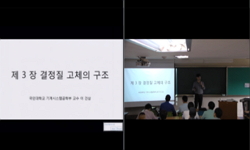The nano-particle deposition system (NPDS) is a new dry spray process used to deposit metal and ceramic particles at room temperature. Low temperature deposition techniques for metals and ceramics that involve particle spraying include the NP...
http://chineseinput.net/에서 pinyin(병음)방식으로 중국어를 변환할 수 있습니다.
변환된 중국어를 복사하여 사용하시면 됩니다.
- 中文 을 입력하시려면 zhongwen을 입력하시고 space를누르시면됩니다.
- 北京 을 입력하시려면 beijing을 입력하시고 space를 누르시면 됩니다.


Deposition mechanism of dry sprayed ceramic particles at room temperature using a nano-particle deposition system
한글로보기https://www.riss.kr/link?id=A107752326
- 저자
- 발행기관
- 학술지명
- 권호사항
-
발행연도
2011
-
작성언어
-
- 주제어
-
등재정보
SCOPUS,SCIE
-
자료형태
학술저널
-
수록면
2693-2703(11쪽)
- 제공처
-
0
상세조회 -
0
다운로드
부가정보
다국어 초록 (Multilingual Abstract)
The nano-particle deposition system (NPDS) is a new dry spray process used to deposit metal and ceramic particles at room temperature. Low temperature deposition techniques for metals and ceramics that involve particle spraying include the NPDS, cold spray, and aerosol deposition methods. These are widely used to minimize thermal damage to the substrate when fabricating metal or ceramic layers. To optimize the process conditions for the intended applications and improve the deposition quality one must understand the mechanism of particle deposition at room temperature. The bonding mechanism in metal particle deposition by the cold spray method has already been researched. Adiabatic shear instability near the particle/substrate interface due to plastic deformation was reported to be the bonding mechanism for metal particles below the melting temperature. However, the bonding mechanism of ceramic particles has not been fully determined. This study assessed the bonding of ceramic particles by NPDS using numerical analysis and experimental results. A bonding mechanism is suggested after considering the experimental results for shock compaction, which is a process similar to that of the NPDS. The suggested deposition mechanism for ceramics involves the fragmentation of submicron ceramic particles into nanoparticles and the successive impact of submicron particles, which provides sufficient bonding energy, with heat and high pressure, to nanoparticles fragmented by the shock wave.




 ScienceON
ScienceON



